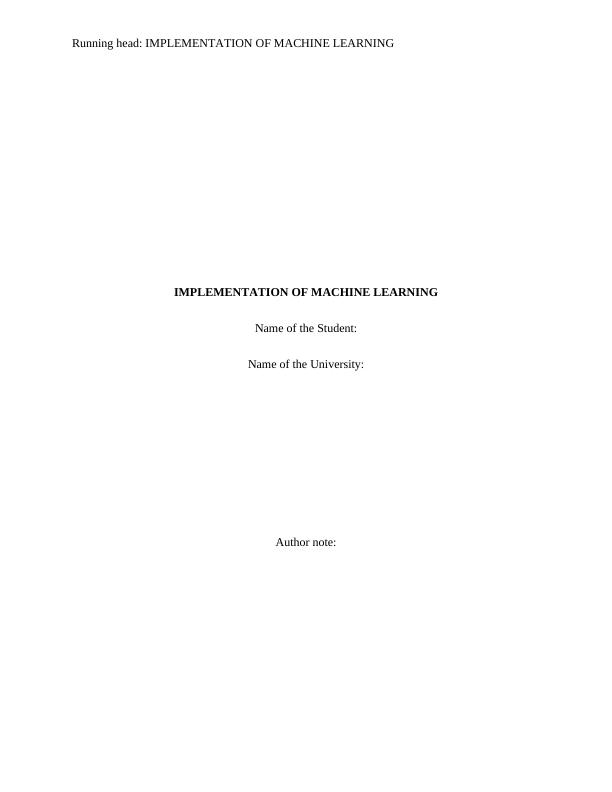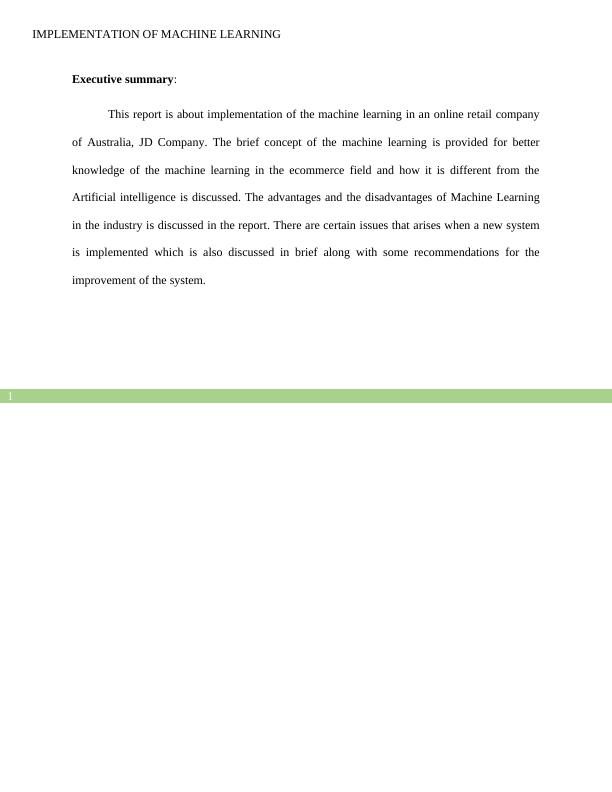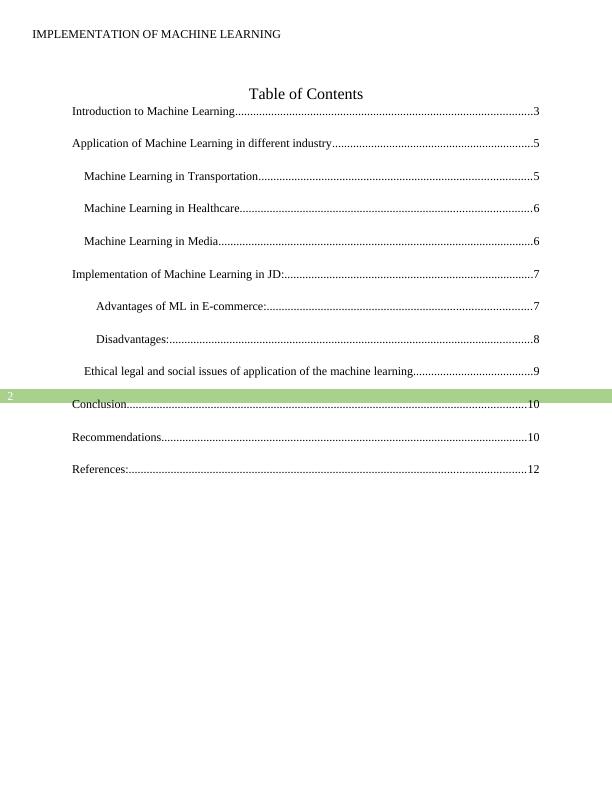Implementation of Machine Learning in E-commerce: A Case Study of JD Company
Write a formal academic report analyzing an assessment task, researching relevant information, and making recommendations for future practice.
16 Pages3722 Words493 Views
Added on 2022-10-15
About This Document
This report discusses the implementation of machine learning in an online retail company, JD Company, in Australia. It covers the advantages and disadvantages of machine learning in the industry, ethical, legal, and social issues, and recommendations for improvement.
Implementation of Machine Learning in E-commerce: A Case Study of JD Company
Write a formal academic report analyzing an assessment task, researching relevant information, and making recommendations for future practice.
Added on 2022-10-15
ShareRelated Documents
End of preview
Want to access all the pages? Upload your documents or become a member.
MODELING & COMPUTING TECHNIQUES
|20
|5570
|13
Modeling & Computing Techniques: Machine Learning and Artificial Intelligence
|21
|5450
|14
Explanation regarding Machine Learning Techniques
|5
|1180
|13
SIT717 – Enterprise Business Intelligence | Supervised Learning
|22
|5751
|79
Professional Skills for Information and Communication Report 2022
|14
|4203
|35
Machine Learning for IoT Systems
|12
|9299
|186




